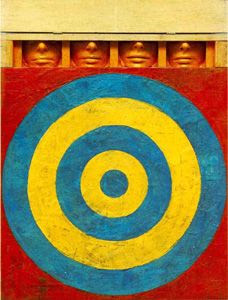
The RAF roundel, with its distinctive red, white, and blue concentric circles, played a significant role in mod culture during the 1960s in the United Kingdom. Mods were a youth subculture characterized by their love of modernism, fashion, and music. They embraced a sharp, clean-cut look and often had a fascination with Italian scooters.
On July 1st, 1965, The Who are filmed performing live versions of “Anyway Anyhow Anywhere” and “Shout and Shimmy” for Ready Steady GO!
The RAF roundel was frequently adopted as a fashion symbol by mods. It appeared on clothing, including parkas, and was often used as a design element on scooters. This adoption of the RAF roundel by mods was a way to signify a sense of patriotism and British identity, while also reflecting the mod ethos of being stylish and fashionable. The roundel became an iconic symbol of the mod movement, representing a connection to both British heritage and modernity.
In addition to the RAF roundel, other symbols and fashion items like the Union Jack flag and specific brands like Fred Perry and Ben Sherman were also closely associated with mod culture. Mods’ fashion choices and their use of symbols like the RAF roundel became an essential part of their identity and played a role in defining the subculture during the 1960s.
Probably appropriated from the US artist, Jasper Johns’ imagery of the early 1960s. John served in the military and appropriated symbols such the roundal and the US flag.

Jasper Johns Target, 1961
From Royal Academy website:
Along with flags, targets are another of Johns’ striking motifs from his early career. Associated with repetition – reciting the national anthem, practicing firing skills – these commonplace items were ingrained in mid-century American life. Johns used them as part of his wider exploration of “things that are seen and looked at, not examined”. He was one of the first artists to depict everyday objects and symbols in the mid-1950s, pursuing “things which suggest the world rather than suggest the personality”, as he said in 1965.
